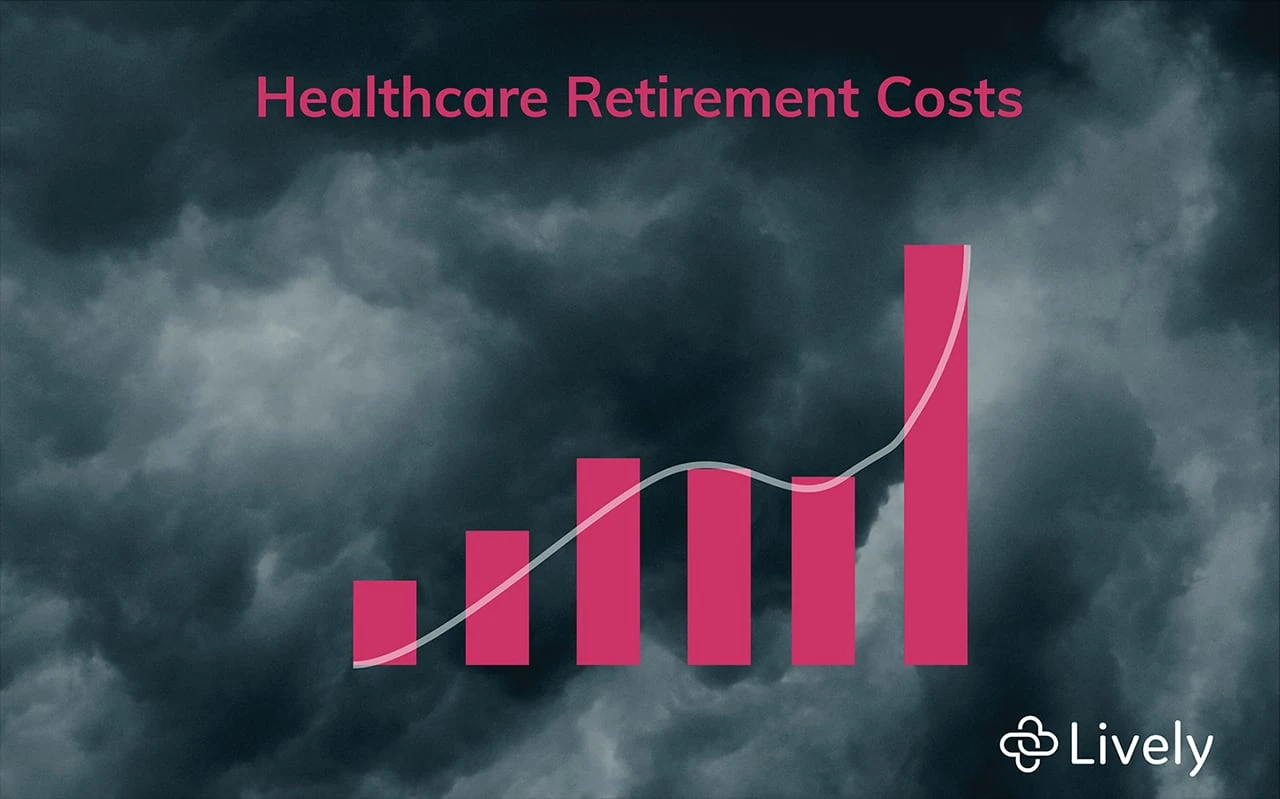The Lively Blog
SIGN UP FOR OUR
Newsletter
Stay up to date on the latest news delivered straight to your inbox
Healthcare Retirement Costs Rise 70%
Lively · August 29, 2017 · 3 min read

Healthcare costs have risen at an alarming rate and are up 70% since 2002, according to a new report from Fidelity. Here is what you can do about it.
Retirement Healthcare Cost Overview
Couples who retire this year will need $300,000 for medical costs in retirement. This is a 6% increase from last year and is on top of the expected Medicare contributions already in place. This means a single person could expect to pay roughly $137,500 for healthcare cost in retirement. (Please note this number skews slightly higher for women based on an average longer life expectancy than men.)
Medicare only actually pays for 35% of projected health costs in retirement, which is why the projected costs so significant from a personal finance perspective as we factor in out of pocket expenses like co-payments, deductibles, prescription drugs and especially long-term care, the cost just grows and grows.
Why Has Retirement Healthcare Costs Grown So Rapidly?
At a high level, healthcare costs look like they are growing at the same rate as the S&P 500, which might look great for your investments portfolio but terrible for your bank account. Health cost increases aren’t something new, they seem to be part of a perpetual recurring news cycle. In fact, this does mirror the national health story, with 18% of GDP currently accounting for health cost. As individuals, if this doesn’t seem to hit home, this data should. Two factors are contributing most to this increase in costs:
Inflation – sadly this economic buzzword is all too important in this conversation. Fidelity estimated of healthcare costs have risen a steady 7.2% in relation average annual 5.5% inflation rate for medical care. Most of the increase is just a correlation of real dollars to account for the increased costs of living.
Medical costs are rising faster than inflation. This last part is a bit more unsettling. With all of the medical advancements of the last 25 years, costs decreases were not part of those enhancements. One of the most significant costs increases is an 8% increase is Medicare Part D (also called the Medicare prescription drug benefit. This program subsidizes the costs of prescription drugs for participants).
What You Can Do About Retirement Healthcare Costs
There are many savings vehicles to help set aside or investment money for retirement, like a 401k or IRA. Those do provide general savings but are not specifically tied for healthcare or health services.
HSA are dedicated health savings tool, that allows you to save and investment pre-tax money to put aside for short-term health costs and long-term health costs. It’s like a 401k for healthcare. It is compatible with any HSA eligible plan (like a high deductible health plan) regardless of income tax bracket.
In addition, after the age of 65, an HSA can be used for non-health expenses – just pay income taxes at that time with no penalty, just like an IRA or 401k. In addition and unlike a 401k, you can let your HSA grow well into your 70s, 80s, 90s, etc. because there are no mandatory distributions.
We can’t control the rising healthcare costs, at least at the individual level. We can do our best to be healthy, but unexpected cost arise. Use an HSA to create dedicated health savings for now and years into retirement.
If you need more help with HSA decisions, check out our blog. We will make you a healthcare benefits expert in no time, without any extra work or effort on your end.

Benefits
2025 and 2026 HSA Maximum Contribution Limits
Lively · May 9, 2024 · 3 min read
On May 9, 2024 the Internal Revenue Service announced the HSA contribution limits for 2025. For 2025 HSA-eligible account holders are allowed to contribute: $4,300 for individual coverage and $8,500 for family coverage. If you are 55 years or older, you’re still eligible to contribute an extra $1,000 catch-up contribution.

Benefits
What is the Difference Between a Flexible Spending Account and a Health Savings Account?
Lauren Hargrave · February 9, 2024 · 12 min read
A Health Savings Account (HSA) and Healthcare Flexible Spending Account (FSA) provide up to 30% savings on out-of-pocket healthcare expenses. That’s good news. Except you can’t contribute to an HSA and Healthcare FSA at the same time. So what if your employer offers both benefits? How do you choose which account type is best for you? Let’s explore the advantages of each to help you decide which wins in HSA vs FSA.

Health Savings Accounts
Ways Health Savings Account Matching Benefits Employers
Lauren Hargrave · October 13, 2023 · 7 min read
Employers need employees to adopt and engage with their benefits and one way to encourage employees to adopt and contribute to (i.e. engage with) an HSA, is for employers to match employees’ contributions.
SIGN UP FOR OUR
Newsletter
Stay up to date on the latest news delivered straight to your inbox
